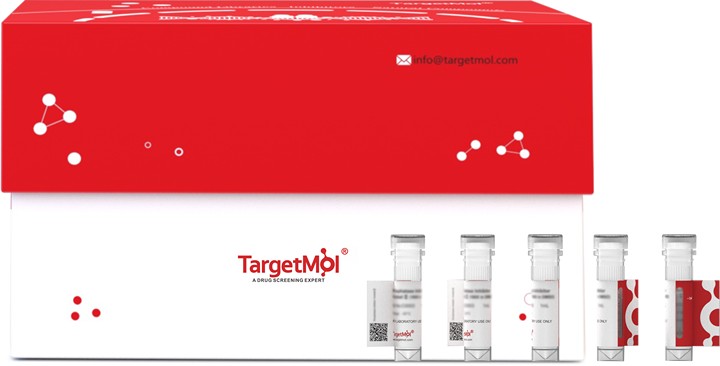Shopping Cart
Remove All Your shopping cart is currently empty
Your shopping cart is currently empty
HLA-DPA1 Protein, Human, Recombinant (His) is expressed in E. coli.

| Pack Size | Price | USA Warehouse | Global Warehouse | Quantity |
|---|---|---|---|---|
| 5 μg | $75 | 20 days | 20 days | |
| 10 μg | $119 | 20 days | 20 days | |
| 20 μg | $198 | 20 days | 20 days | |
| 50 μg | $297 | 20 days | 20 days | |
| 100 μg | $427 | 20 days | 20 days | |
| 200 μg | $658 | 20 days | 20 days | |
| 500 μg | $1,170 | 20 days | 20 days | |
| 1 mg | $1,850 | 20 days | 20 days |
| Biological Activity | Activity has not been tested. It is theoretically active, but we cannot guarantee it. If you require protein activity, we recommend choosing the eukaryotic expression version first. |
| Description | HLA-DPA1 Protein, Human, Recombinant (His) is expressed in E. coli. |
| Species | Human |
| Expression System | E. coli |
| Tag | N-6xHis |
| Accession Number | P20036 |
| Synonyms | MHC class II DPA1,MHC class II DP3-alpha,HLA-SB alpha chain,HLASB,HLA-DPA1,HLA-DP1A,HLA class II histocompatibility antigen, DP alpha 1 chain,DP(W4),DP(W3),DP alpha 1 chain |
| Amino Acid | AGAIKADHVSTYAAFVQTHRPTGEFMFEFDEDEMFYVDLDKKETVWHLEEFGQAFSFEAQGGLANIAILNNNLNTLIQRSNHTQATNDPPEVTVFPKEPVELGQPNTLICHIDKFFPPVLNVTWLCNGELVTEGVAESLFLPRTDYSFHKFHYLTFVPSAEDFYDCRVEHWGLDQPLLKHWEAQEPIQMPETTE |
| Construction | 29-222 aa |
| Protein Purity | > 90% as determined by SDS-PAGE.  |
| Molecular Weight | 26.3 kDa (predicted) |
| Endotoxin | < 1.0 EU/μg of the protein as determined by the LAL method. |
| Formulation | Tris/PBS-based buffer, please refer to the lot specific COA. |
| Reconstitution | A Certificate of Analysis (CoA) containing reconstitution instructions is included with the products. Please refer to the CoA for detailed information. |
| Stability & Storage | Lyophilized powders can be stably stored for over 12 months, while liquid products can be stored for 6-12 months at -80°C. For reconstituted protein solutions, the solution can be stored at -20°C to -80°C for at least 3 months. Please avoid multiple freeze-thaw cycles and store products in aliquots. |
| Shipping | In general, Lyophilized powders are shipping with blue ice. Solutions are shipping with dry ice. |
| Research Background | Binds peptides derived from antigens that access the endocytic route of antigen presenting cells (APC) and presents them on the cell surface for recognition by the CD4 T-cells. The peptide binding cleft accommodates peptides of 10-30 residues. The peptides presented by MHC class II molecules are generated mostly by degradation of proteins that access the endocytic route, where they are processed by lysosomal proteases and other hydrolases. Exogenous antigens that have been endocytosed by the APC are thus readily available for presentation via MHC II molecules, and for this reason this antigen presentation pathway is usually referred to as exogenous. As membrane proteins on their way to degradation in lysosomes as part of their normal turn-over are also contained in the endosomal/lysosomal compartments, exogenous antigens must compete with those derived from endogenous components. Autophagy is also a source of endogenous peptides, autophagosomes constitutively fuse with MHC class II loading compartments. In addition to APCs, other cells of the gastrointestinal tract, such as epithelial cells, express MHC class II molecules and CD74 and act as APCs, which is an unusual trait of the GI tract. To produce a MHC class II molecule that presents an antigen, three MHC class II molecules (heterodimers of an alpha and a beta chain) associate with a CD74 trimer in the ER to form a heterononamer. Soon after the entry of this complex into the endosomal/lysosomal system where antigen processing occurs, CD74 undergoes a sequential degradation by various proteases, including CTSS and CTSL, leaving a small fragment termed CLIP (class-II-associated invariant chain peptide). The removal of CLIP is facilitated by HLA-DM via direct binding to the alpha-beta-CLIP complex so that CLIP is released. HLA-DM stabilizes MHC class II molecules until primary high affinity antigenic peptides are bound. The MHC II molecule bound to a peptide is then transported to the cell membrane surface. In B-cells, the interaction between HLA-DM and MHC class II molecules is regulated by HLA-DO. Primary dendritic cells (DCs) also to express HLA-DO. Lysosomal microenvironment has been implicated in the regulation of antigen loading into MHC II molecules, increased acidification produces increased proteolysis and efficient peptide loading. |
| Size | Quantity | Unit Price | Amount | Operation |
|---|

Copyright © 2015-2026 TargetMol Chemicals Inc. All Rights Reserved.